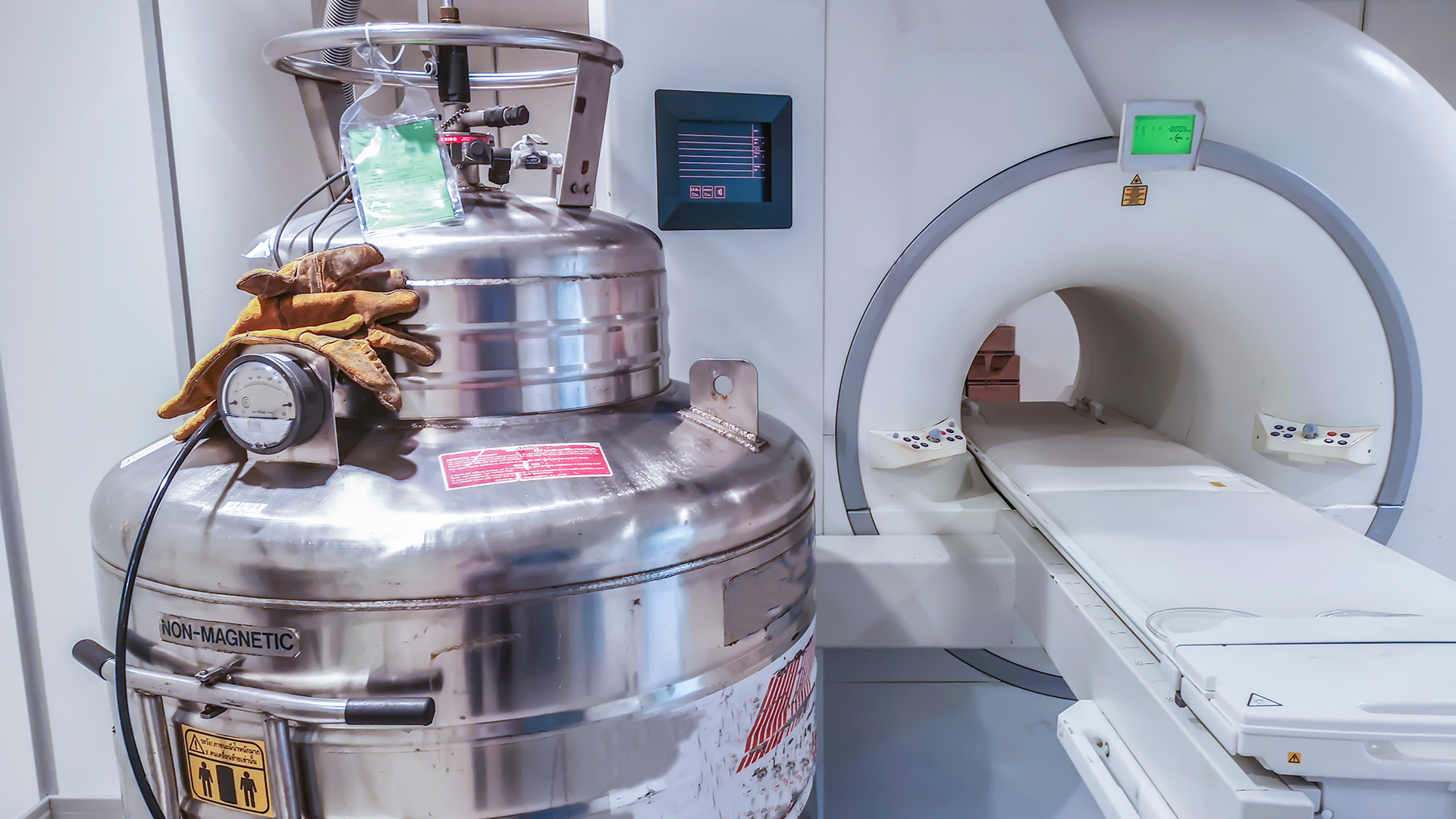Although abundant in the universe, helium is a finite and irreplaceable resource on Earth, playing a critical role in various scientific endeavours.
While you may know it as the substance that allows balloons to defy gravity, the uses of helium extend far beyond mere amusement.
In scientific research, helium is indispensable—used in everything from cooling the powerful magnets in MRI machines to enabling the Large Hadron Collider to delve into the mysteries of particle physics.
You rely on its unique properties often without even realising it, as it quietly underpins a multitude of technologies woven into the fabric of daily life.
Yet, as we stand on the brink of new scientific revelations, it’s crucial to understand why the scarcity of this unsung hero could pose a threat to innovation and what steps the global community must take to ensure its availability for future generations.
Unique properties of helium
Helium’s exceptional properties, such as its extreme stability and low boiling point, render it irreplaceable in various scientific applications.
Helium isotopes, for instance, provide critical insights in fields ranging from geology to nuclear physics. While Helium-4 is abundant and widely used, Helium-3 has become a sought-after isotope for neutron detection and research due to its rarity.
The abundance of helium in the universe is staggering; it ranks as the second most prevalent element after hydrogen. However, it is relatively scarce here on Earth, necessitating careful extraction and conservation.
Unlike simply gathering it from the air, helium must be separated from natural gas reserves through a process that captures its low boiling point, a characteristic crucial for helium liquefaction.
Once liquefied, helium becomes a superfluid at temperatures near absolute zero, exhibiting zero viscosity and the ability to flow without dissipating energy—a phenomenon not just an impressive party trick but vital for cutting-edge scientific research.
Helium spectroscopy, an essential tool for understanding atomic and molecular structures, relies on helium’s lack of reactivity to create an inert spectral environment, which is crucial for accurate measurements and groundbreaking discoveries.
Helium extraction and resources
Understanding the critical uses of helium for scientific progress underscores the need to examine how we extract and manage this finite resource.
Helium reserves are not evenly distributed globally, with significant deposits in the US, Qatar, and Algeria. These reserves are crucial for maintaining a steady supply chain of helium, but they are depleting at a pace that could affect future applications.
Extraction methods primarily involve separating helium from natural gas. This process becomes economically viable when the concentration of helium is above 0.3%.
Looking ahead, the future prospects of helium supply are a growing concern. With the current rate of consumption, alternatives and conservation measures are becoming increasingly important.
Innovations in recycling and more efficient extraction methods could alleviate some of the pressure on existing reserves. Economic implications, such as price volatility and the cost of extraction technology, also play a significant role in helium accessibility for research and industry.
Responsible management of helium resources is not just about supply and demand—it’s about ensuring that this irreplaceable element remains available for critical applications in medicine, space exploration, and technology.
Balancing economic growth with environmental stewardship and resource conservation is key to sustaining helium availability for future generations.
Helium in medicine
The uses of helium in the medical field are vast, particularly in the operation of MRI machines. This indispensable element has been a game-changer in healthcare technology, driving medical advancements that save lives every day.

In diagnostic imaging, helium’s unique properties allow MRI machines to generate detailed images of the human body, providing doctors with critical information to make accurate diagnoses.
Helium’s low boiling point keeps the superconducting magnets in MRI scanners extremely cold, preventing them from overheating. Without helium, the therapeutic benefits of MRIs would not be possible. It’s a silent yet powerful force behind the scenes, ensuring that patients receive the best care possible.
The following table highlights the essential uses of helium in the medical sector:
| Application in Medicine | Impact |
| Operation of MRI machines | Peace of mind for early diagnosis |
| Enabling advanced research tools | Hope for breakthrough cures |
| Cooling in cryogenics | Relief in pain management |
Each of these applications showcases helium’s versatility in medical applications and its integral part in research innovations that lead to new therapies and cures.
Scientific uses of helium
The uses of helium extend to various scientific applications, from particle physics to space exploration. You might be surprised to learn just how critical this element is in driving innovation and discovery.
Helium’s unique properties make it the go-to choice for cryogenic experiments. It allows scientists to push the boundaries of what’s possible in low-temperature research, a field that’s vital for understanding the quantum realm.

In particle accelerators, the uses of helium are non-negotiable. It ensures that these massive machines can operate efficiently, enabling us to delve into the fundamental particles that make up the universe.
Furthermore, helium plays a pivotal role in plasma physics and astrophysical observations. It aids in creating and studying plasma states, which are crucial for understanding solar activities and developing fusion energy.
When it comes to observing distant celestial bodies, helium’s role in cooling infrared detectors helps us peer further into space, unveiling the mysteries of the cosmos.
Industrial and aerospace applications
Beyond its scientific and medical applications, helium’s unique properties are also indispensable in industrial processes and the aerospace industry, where it plays a critical role in everything from manufacturing to space exploration.
You’ll find that helium is at the heart of numerous manufacturing advancements, providing an inert atmosphere for producing high-quality fibre optics and semiconductors. It’s also crucial in welding processes, where it shields materials from the air to prevent unwanted oxidation.
In terms of space exploration, helium’s role becomes even more pronounced. This lightweight yet powerful element is used to purge and pressurise fuel tanks in rockets, a testament to its versatility and reliability in extreme conditions. NASA and other space agencies rely on helium for their groundbreaking missions, making it a staple in the push for aerospace innovations.

In military technology, the uses of helium are equally vital. Its applications range from pressurising missile fuel tanks to operating surveillance balloons – tools that are essential for national defence operations. The military’s high-tech apparatus, often operating under rigorous demands, benefits from helium’s stable and non-reactive nature.
Lastly, consider the wider scope of industrial processes where helium is a silent yet essential player. From detecting leaks in critical pipelines to aiding in the production of metals like titanium, helium’s role can’t be overstated.
Conservation and recycling
It is increasingly crucial to prioritise helium conservation and recycling efforts to sustain its availability for future generations. Implementing sustainable practices and supporting policies that promote resource management are essential steps in this direction.
With advanced recycling technology, it’s possible to recover and purify helium for repeated use, ensuring that this finite resource remains available for the cutting-edge scientific research that depends on it.
Global supply challenges
The scarcity of helium presents a significant challenge to the global supply chain, impacting industries and research institutions worldwide. As we’re all aware, helium is vital for numerous applications, and its limited availability has far-reaching market implications.
Technological advancements have increased global demand, leading to tensions in economic stability. The crunch is real, and it’s not just a matter of inflated prices—it’s about sustaining industries that rely on this irreplaceable gas.
We’re in a world where maintaining supply while investing in recycling and recovery methods is crucial. It’s not just about keeping our balloons afloat; it’s about ensuring that technological progress doesn’t come to a standstill.
The next breakthrough in medicine or space exploration could hinge on a steady supply of helium, and that’s something worth taking seriously.










